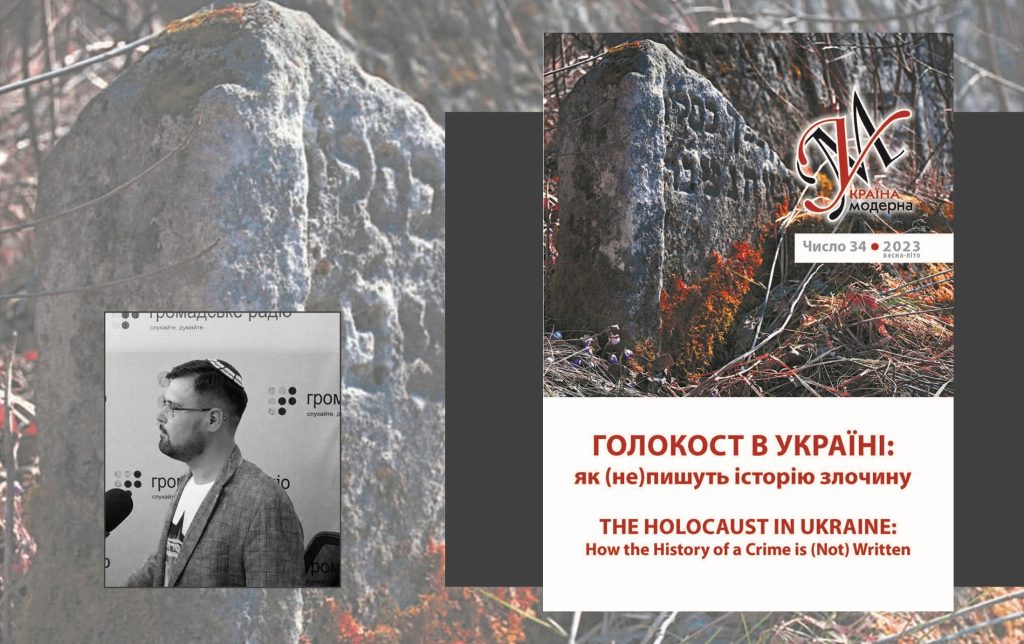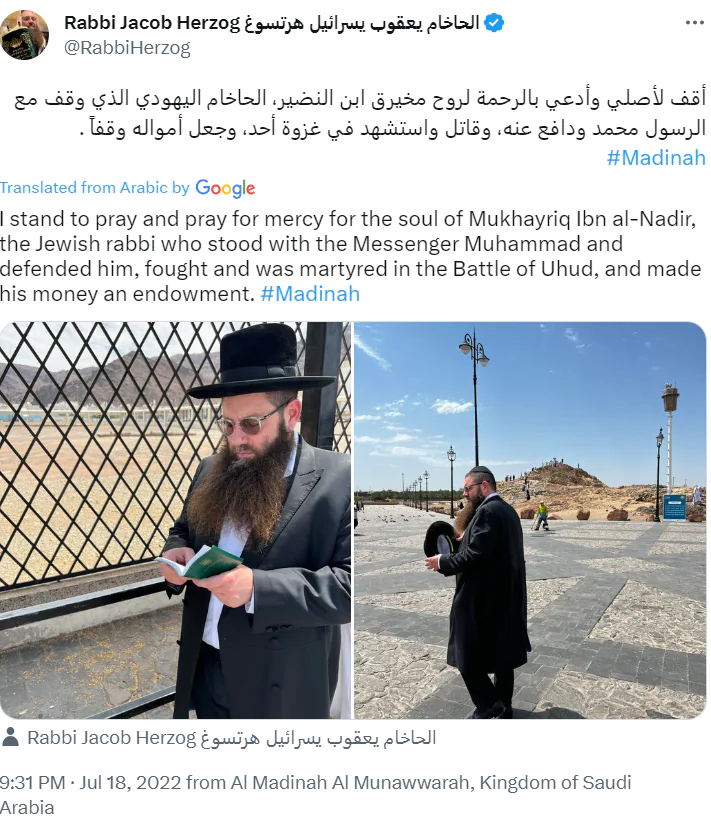An important discussion in difficult times
The publication of the latest issue of Ukraїna Moderna, entitled The Holocaust in Ukraine: How the History of a Crime Is (Not) Written and focused on Shoah research in Ukraine, sparked significant interest in scholarly circles. In the European political discourse, it has long been thought that an important step for any country seeking integration into the EU is the resolution of "problematic questions" of the past, including a discussion about the persecution and murder of Jews during the Second World War. Many years ago, Ukrainian public intellectuals were already repeating their Western colleagues' ideas that "acknowledgment of [Ukrainians'] involvement in the Holocaust is a kind of ticket for the European integration train." [1] In many regards, the events that took place after the start of the RF's full-scale war against Ukraine on 24 February 2022 and the HAMAS movement's attack on Israel on 7 October 2023 changed the assessment of the question of how and to what extent the events of the Second World War affect contemporary reality. This is especially true in the context of the political instrumentalization of the history of the Holocaust by Putin's Russia and the attitude to the slogan "Never again!" which was subverted on 7 October 2023, when, on a single day, approximately 1,200 Jews were killed on a small chunk of territory, and 200 were taken hostage.
Yuri (Amir) Radchenko
Discussion Forum in issue no. 24 of Ukraїna Moderna: key questions and organizational features
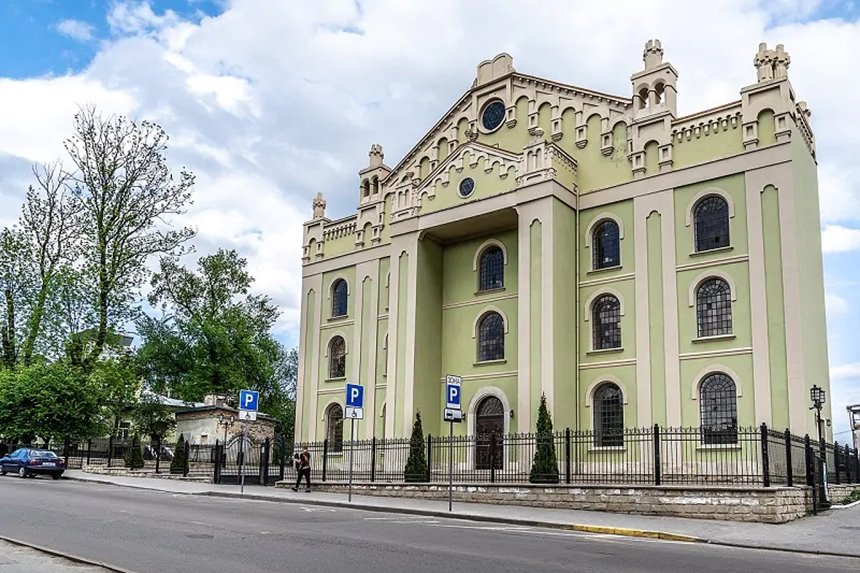
The new issue of Ukraїna Moderna begins with a discussion forum attended by historians from Ukraine, the U.S., Austria, Canada, and Germany. [2] Organized by the journal, the discussion encourages us to continue reflecting, in particular, on events in recent years. In this article, I analyze the course of this discussion. For my analysis, I relied not only on the materials of the discussion published in the journal but also on the video recording of the launch of this issue featuring Petro Dolhanov, Igor Shchupak, and Yehor Vradii. [3]
Unfortunately, the discussion did not take place in person, with historians sitting down together and exchanging views, but in the form of a survey that was conducted via an exchange of correspondence. The editors of the issue sent the participants (Anatoly Podolsky, Kai Struve, Dieter Pohl, Martin Dean, John-Paul Himka, Jared McBride, Oleksandr Lysenko, Maksym Gon [4], Igor Shchupak, and Omer Bartok) a list of questions about various issues proposed for discussion:
- The involvement of the local non-Jewish population in the killings of Jews: between "national responsibility" and "blamelessness";
- A critique of the "bystander" concept;
- How a historian can sidestep the role of "judge" in studying the Shoah;
- Is it legitimate to compare the Shoah to other genocides or genocidal phenomena?;
- The role of "eyewitness testimonies" as a primary source;
- The prospects for gender studies within the study of the Shoah;
- How to commemorate the Shoah "correctly";
- The prospects for Holocaust studies in Ukraine and elsewhere in the world.
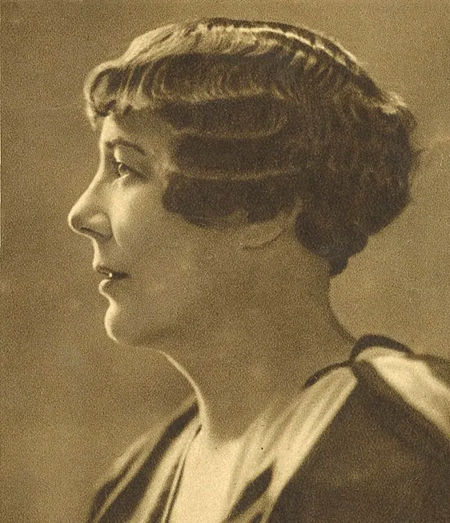
On the whole, the discussion looks interesting and touches on many points that have been insufficiently discussed in the context of Ukraine's history. However, several aspects stick out, and their correction could make the discussion more productive and up-to-date. For example, it is regrettable that no women historians studying the Shoah from Ukraine or abroad participated in the discussion. In many respects, the debate remains on the level of exploring the relations among the occupation government, the "titular nation" (in this context, Ukrainian Orthodox or Greek Catholics), and Ashkenazi Jews. For example, Bartov reflects on "how Ukrainian-Jewish cohabitation was transformed into violence during the Second World War" (p. 58) [5]. In this context, the discussants hardly mention Poles, Russians, Crimean Tatars, Volga Tatars, persons of mixed ancestry, or non-Ashkenazi Jews. [6] Crimean Tatars come into the picture only when the history of their deportation in May 1944 is under discussion. Tellingly, this is done by the German historian Dieter Pohl (p. 47) rather than a researcher from Ukraine. Another problem is that no Crimean Tatar intellectuals (above all, historians of the twentieth century) living in Ukraine or outside its borders (for example, in Türkiye or Western Europe) were involved in this and many other similar discussions. In the context of the relations between Crimean Tatars and Jews (Oriental communities of the Crimea and Ashkenazi Jews), there is an array of inadequately discussed problems.
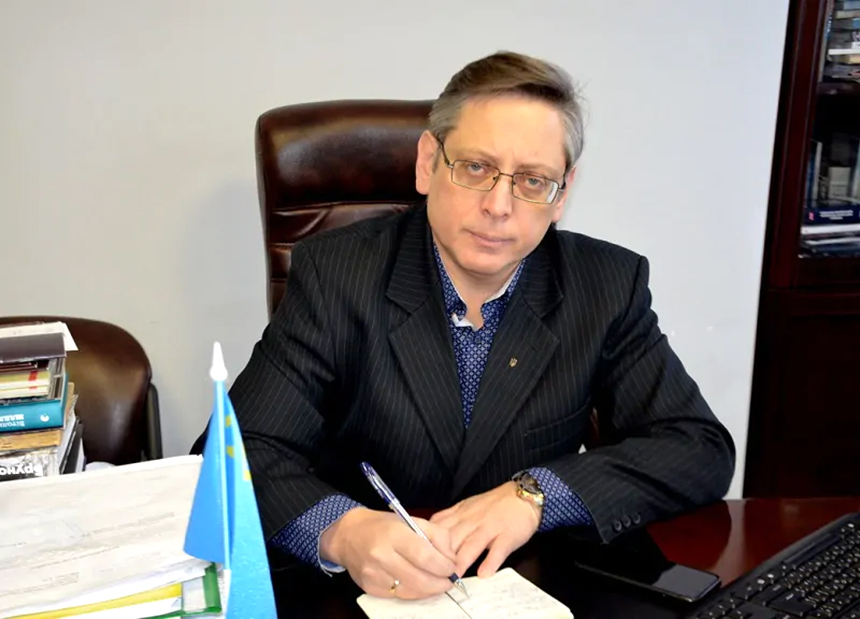
All this leads to numerous incorrect situations. To name a few, one of the projects undertaken by the Crimean House and financed by the Ukrainian Cultural Foundation, that is, by the Ukrainian state, aims to produce a number of "problematic" films. For example, the Zincir — Lantsiuh project has produced a YouTube video calling the Jewish historical identity of the Krymchaks and Crimean Karaites a "Russian invention." It claims that the Krymchaks perished during the Holocaust because of this "invention": "[…] most of the materials on the history and ethnography of the Karaites and Krymchaks are not accessible at present, and we do not know what facts have been concealed from us. […] Russia had completely different plans for the Karaites and Krymchaks. Since these peoples never had their own states, it was necessary to make them 'Russia's.' To change their origins, that is, avoid going into the details of their ethnogenesis. To inspire them far and wide with the idea that they were part of the Jewish people, place them under its [Russia's] sway, fully enable their development and, eventually, assimilate them […] Soviet officials literally forced the Krymchaks to forget their real history. In 1941, the recognition of the small indigenous people as Jewish led to catastrophic consequences. At the start of the German occupation, most of the Krymchaks of Simferopol, Karasubazar, Feodosia, Kerch, and Sevastopol were destroyed. The only people who survived were those who happened to call themselves Tatars or Karaites." [7]
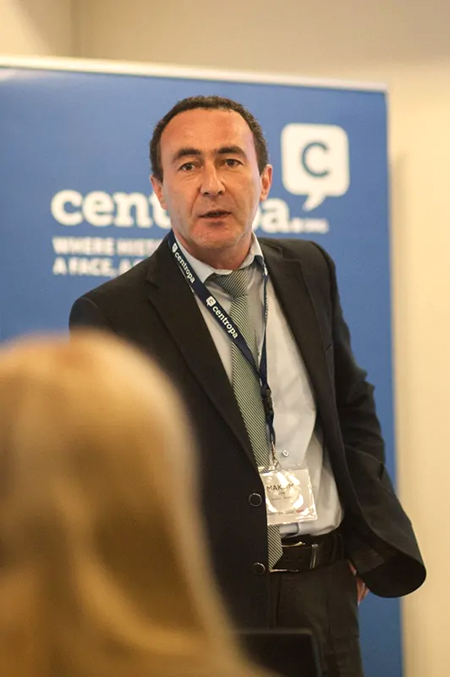
Regrettably, binary approaches ("titular nation — Ashkenazi) in the study of Holocaust history are present in the writings of many other well-known scholars and conference organizers in the West. [8] Thus, it is clear that the discussion organizers followed "Western standards" dating to the early 2000s and did not seek to discover anything new or unique. Our Polish colleagues, who have a huge school devoted to the study of the Holocaust, represented by the Warsaw-based Centrum Badań nad Zagładą Żydów, were not involved in this discussion by correspondence. Furthermore, if Barbara Engelking or Andrzej Żbikowski had participated, it would have raised the level of discourse.
The discussants use various approaches to determine who are "local" inhabitants of Ukraine and who are not. For example, Igor Shchupak draws a distinction between the "local population" (meaning, apparently, Ukrainians, Russians, Poles, and others) and Jews (p. 27). Anatoly Podolsky talks about the "local non-Jewish population" (p. 25), emphasizing the long-obvious fact that Jews are also a local population, along with other peoples.
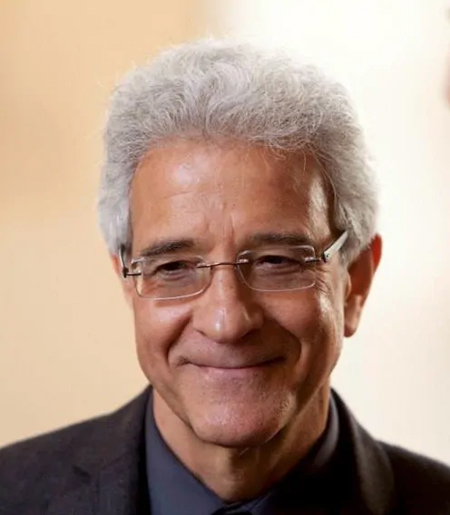
Shchupak advances other rather questionable theses. For example, he claims that there were "ideological antisemites among the Ukrainians" (my quotation marks — Yu.R.), whose "goal was not the total physical destruction of Ukraine's Jews" (p. 28). In his words, "the same can be found in the position of 'ideological antisemites' in Poland. It is well known that among the organizers and active figures of Żegota were Poles who did not hide their antisemitic views (like Zofia Kossak-Szczucka). Nevertheless, Kossak-Szczucka and other Polish leaders not only decisively condemned the mass killings of Jews and the indifference of world leaders to their fate but also created and directed the activities of the largest organization in Europe that offered assistance to the Jews who were doomed to destruction" (p. 28).
Of course, one can draw parallels between Ukrainian and Polish political, military, and religious figures during the war. However, it is crucial to consider several aspects. First of all, information about the fate of the Jews was collected by the Jewish assistant in the information department at the Bureau of Information and Propaganda of the Headquarters of the Home Army (Armia Krajowa, AK). [9] In other words, the Polish government-in-exile was interested, albeit indirectly, in the fate of Polish Jews. Second, this government was quite moderate in terms of its ideology and practices; it was not headed by right-wing or left-wing radicals. The Polish far right had its own insurgent detachments, the National Armed Forces (Narodowe Siły Zbrojne, NSZ), but they were small in number. During the war, the Ukrainians did not have their own legitimate, moderate government-in-exile independent of the Germans. Furthermore, the Ukrainians had suffered a defeat in their liberation efforts because they did not have long-standing experience with state building during the interwar period. Ukrainian insurgent units were composed of people whose views during the war were far from democratic. In terms of ideology, they were closer to the NSZ than most of the AK's personnel. When Shchupak mentions Kossak-Szczucka or Krahelska-Filipowicz, their Catholic antisemitism should be kept in mind, as well as the fact that they were natives of the "borderlands" (kresy). [10] The Poles living in these territories considered themselves a minority, like the Jews.
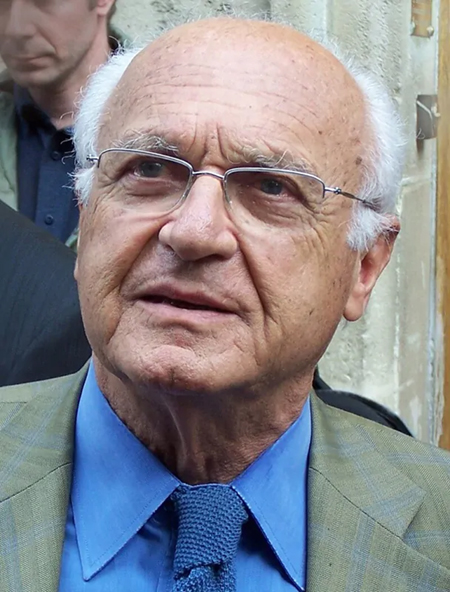
How historians interpret what they cite is important. What is incorrect in this discussion is that Shchupak cites Erna Klinger's recollections about blood testing "for Jewishness" without commenting on them: "Studying the document allowed us to feel life dramas that are capable of moving us more than the tragedies of William Shakespeare. In one example, two girlfriends were imprisoned: one was a Jewish girl, while the other was a Polish girl suspected of being Jewish. Their blood was tested. The Jewish girl proved to be a pure Aryan, and the real Aryan — the Polish girl — was arrested because her blood was not from the Aryan group. Then, the Jewish girl turned to her friend's family, and they intervened into the course of the case" [sic] (p. 54).
In the 1920s and 1930s, biologists tried to establish the criteria for deciding, with the aid of blood typing, who could be considered a Jew, a Russian, a Korean, or a Kyrgyz. [11]. However, these approaches were totally unscientific. As facts show, such testing was instead an attempt to intimidate people who might betray themselves in an extreme situation. [12] Similarly, the Germans tried to determine the "Jewishness" of Slavs who professed the Karaite faith (subotnyks) in the Crimea in 1942. [13] It is interesting to note that the adherents of Karaite Turkic nationalism put forward a narrative claiming that blood typing and "anthropological racial feature" analysis made it possible to determine whether a person was Jewish or not. [14] Thus, a responsible scholar must comment on such statements in sources. On the whole, it cannot be excluded that stories about "blood typing for Jewishness" may be (at least partly) a postwar folkloric construct. Similar "racial studies" could also be confused with taking blood to detect the presence of infectious diseases.
Discussion around the Jewish historical and cultural heritage and commemoration
One important question that is discussed in the forum is what to do with the Jewish legacy in Ukraine (synagogue buildings, cemeteries, etc.), which are falling into ruin or being looted because of neglect. Omer Bartov talks about this: "Very little was also done to honor the memory of Jewish life in Ukraine before the Holocaust, and the remnants of Jewish sites, such as cemeteries and synagogues, are very neglected" (p. 66). Another discussant, Maksym Gon, justly observes that in present-day Ukraine, "participation in commemorative events is the prerogative above all of representatives of the small number of Jewish communities or members of their cultural and historical societies" (p. 66). In other words, the state most often (of course, with some exceptions) refuses to participate in such projects, and then civil society gets down to business. Thus, one of the basic problems in this situation is the question of what to do with the Jewish legacy in the absence of a Jewish community or a Jewish population (or one that is small and composed of elderly individuals). For example, is there any sense in rebuilding an old synagogue as a place of prayer when there is no possibility of organizing a minyan in the city? Or is it better to turn the synagogue into some sort of "Jewish museum" or preserve everything "as is" and install a plaque describing the history of this site? Or should everything be abandoned to the depredations of looters, with nature completing this process of ruination? These questions remain unanswered, especially during the present war. They are nothing unique or new. When Claude Lanzmann was shooting his famous film Shoah in the Polish People's Republic, he saw synagogues in former Jewish small towns standing untended because there was simply no one left to pray in them:
"There was a synagogue in Volodava?
Yes, there was,
Аnd how beautiful it was!
From tsarist times.
Even older than the Roman Catholic church.
But right now it's closed.
There are no faithful." [15]
At the same time, the situation around the commemoration of the Jewish heritage in Central and Eastern Europe (and even in Ukraine during the current full-scale war), when compared to the situation in other countries, does not look so bad.
The Kingdom of Saudi Arabia (KSA) can serve as a model for resolving similar problems. In the spirit of the Abraham Accords, the rabbi and chaplain Jacob Israel Herzog, who also calls himself the "chief rabbi of the KSA," initiated and implemented a project to honor the memory of the hakham (rabbi) Mukhayriq in the summer of 2022. [16] He traveled to the cemetery where Muhammad's followers killed at the Battle of Uhud are buried and said a prayer there "for the soul of Mukhayriq ibn Nadir, the Jewish rabbi […] who died as a shahid." [17] Unfortunately, such actions became impossible after the HAMAS attack on Israel on 7 October 2023 and the denunciation (or freeze) of the Abraham Accords. But, as they say, time heals all wounds. Perhaps in a few decades, we will see a museum dedicated to the Battle of Khaybar or something similar in the KSA; at least, I would like to hope that this will happen.
As the practices of the countries whose example Ukraine is trying to emulate indicate, the commemoration of the Shoah, the integration of the Jewish legacy into the national narrative, and the formation of local Jewish identity can take place as parallel processes. That is what happened in France, for example. As the prominent historian Pierre Nora has written, it was precisely in this country where the memory of the Holocaust, the Vichy regime, and the process of constructing Jewish identity became mutually dependent. In the early 2010s, he noted that the path toward admitting the guilt of the French state and society, through the words of President Jacques Chirac in the summer of 1995, was not an easy one: "Thirty years ago no one talked about 'Jewish memory'; even the memory of Vichy was not all that connected to the antisemitic laws and culpability of the French state for the deportation and destruction. Today, everything is the other way around, and the 'Jewish community' (another phrase that no one employed previously) does not stop demanding that the President of the Republic acknowledge this culpability, which Jacques Chirac did in his famous speech at Paris's Vélodrome d'Hiver on 16 July 1995. What in France is called 'national memory' is none other than the transformation of deep historical memory as a result of the intervention of group memories." [18]
According to Nora, the discussions in France about the Holocaust and contemporary Jewish identity and generational identity formation are linked to two historical events: "May 1968" and the Six-Day War. Nora writes that in 1967, "when the specter of a second Holocaust appeared […], broad support for Israel gave rise to a long-term trend among French Jews who discovered a religious, cultural, and historical continent that was erased by 'French-style' assimilation.'" [19] In October 2023, we saw (actually, live) something more than a "specter of the Holocaust." When Nora described the French experience of commemoration, he recalled a period "when people were not talking very much either about the Shoah (this term gradually came into use after the release of Lanzmann's 1985 film) or about Vichy […]." Speaking about the relationship between "French people of all backgrounds" and "French Jews," he noted, in the context of the Six-Day War, that these events compelled even him, a rather assimilated Jew, to take a trip to Israel, and his fellow citizens — to examine their relations with the French state and the non-Jews all around them: "In upholding the classic Franco-Jewish understanding, French Jews themselves regarded their suffering or persecution as a tribute to patriotic and national self-sacrifice. Much time had to pass for a considerable number of events to take place, starting with the creation and consolidation of the State of Israel, for a person like me to appear at the Israeli Embassy on the morning of 6 May 1967 and on the 12th — in Tel Aviv." [20]
I think that the events of the two Maidans and the Russo-Ukrainian War (especially after 24 February 2022) and 7 October 2023 should become important factors in the appraisal of Jewish heritage in Ukraine and the identity of Ukrainian Jews in general. Demography might become a problem for Ukrainian Jewish identity, unlike the French one in the 1960s–1980s when many Jews came to France from Algeria. In the case of Ukraine, we have the opposite trend when the war and assimilation have caused quite a high level of emigration from the country.
Current issues omitted from the discussion
Many challenges that are relevant to researchers of the Holocaust in Ukraine remained outside the discussion. One that emerged back in 2014 and became fully developed in 2022 is the fate of Ukrainian archival sources. In a recent article, the prominent American historian Hiroaki Kuromiya, author of an excellent monograph on the history of the Donbas in the nineteenth and twentieth centuries, states that the RF's full-scale war against Ukraine has fully halted access (at least, at the present historical stage) to important sources that are stored in Russian archives: "[…] facts are facts: documents of crucial importance for understanding the history of Ukraine, Russia, and the Soviet Union are held precisely in Russia rather than in the other former Soviet republics. To a certain extent, scholars can skirt this issue by doing research in the West as well as in the former Soviet bloc countries, like Poland and Bulgaria. Let's say that, after protracted searches for documents in Russia, I found some of them in Ulaanbaatar, Mongolia. Several years later, in Taipei (Taiwan), I found two original letters from Stalin to Chiang Kai-shek dating to 1939 and 1941, copies of which are held in closed-access collections in Moscow." [21]
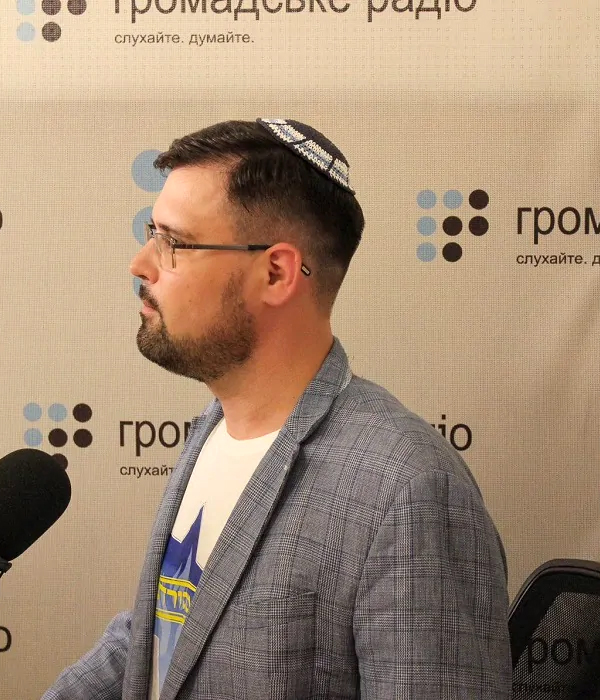
In response to queries I sent to the SBU archives, I was informed that important documents pertaining to my topic are probably held "in archives in the temporarily occupied Autonomous Republic of the Crimea and the archives of the security organs of the aggressor-country, the Russian Federation." [22] Add to this the destruction of archives on the territory of Ukraine by Russian missiles and the transfer of archives from the occupied districts of Ukraine to the RF in 2014 and 2022.
Despite certain aspects, the discussion in Ukraїna Moderna is interesting and important. First of all, it helps ensure that the Holocaust is present in the Ukrainian discourse, at least the scholarly one. Second, with this text at hand, at some point, we will be able to analyze how scholars from Ukraine, Western European countries, and Israel perceived the Holocaust on the eve of and at the start of the RF's full-scale invasion of Ukraine. I remain pessimistic about the prospects for a broad public discussion of the role of the local, non-Jewish population during the Holocaust in Ukraine. A discussion along the lines of those that have taken place in France or Poland ("at least like the one in Poland") can hardly be expected in the next few years and even decades. The main reason is 24 February 2022 and Putin's instrumentalization of the history of the Holocaust and the radical wing of the Ukrainian nationalist (national) movement during the Second World War. But it must not be forgotten that in Germany, where the memory of the Shoah often serves as a model for other countries, things were not so easy at the first stages. [23] That is why, in any case, even in wartime, when inter arma silent Musae ("In wartime, the muses are silent"), one must not forget what the Jewish sages say in the Mishnaic tractate of Avot: "You are not obligated to complete the work, but neither are you free to desist from it." And for professional historians and the civil society of a democratic country, such a discussion is part of this great work.
Photos from the author's personal archive and open sources were used in this publication.
Endnotes
1 Yaroslav Hrytsak, “Holokost — tse ukraїns′ke pytannia,“ Ofitsiinyi vebsait Nezalezhnoho kul′turolohichnoho chasopysu Ї.
2 Dyskusiinyi forum, Ukraїna Moderna, no. 34, Holokost v Ukraїni: Iak (ne) pyshut′ istoriiu zlochynu (Kharkiv; Lviv: Vydavnytstvo Manuskrypt-L′viv, 2023), 17–75. (The electronic journal is available on the University of Toronto Press website.)
3 "Discussion of Issue no. 34 of the Journal Ukraїna moderna," Lviv BookForum, 8 October 2023, Official YouTube channel of the Ukrainian Jewish Encounter (UJE), a Canadian non-profit charitable organization.
4 Serving in the Armed Forces of Ukraine (ZSU) since March 2022.
5 References to page numbers indicated within parentheses refer here and elsewhere to one source: Ukraїna Moderna, no. 34, Holokost v Ukraїni.
6 For different perspectives on the history of the Shoah from the standpoint of multiculturalism, see Iurii Radchenko, "Novi perspektyvy doslidzhennia Holokostu v Ukraїni z pozytsiї mul′tykul′turalizmu," The Ideology and Politics Journal 21, no. 2 (2022): 89–109.
7 A video of the project “Zincir — Lantsiuh. Kul′turno-mystets′kyi proiekt,” on the YouTube channel “Karaїmy, krymchaky, iake spravznie pokhodzhennia tsykh korinnykh narodiv Krymu?”
8 See, for example, The Shoah as a European »Project«? New Perpetrator Research in a Transnational Perspective, 14–16 March 2023
9 "A Conversation with Władysław Bartoszewski (interviewed by Andrzej Friszke, July 2002)," Iehupets′, no. 24 (2015): 58.
10 Ibid., 59–60.
11 Per Anders Rudling, "Eugenics and Racial Biology in Sweden and the USSR: Contacts across the Baltic Sea," Canadian Bulletin of Medical History 31, no. 1 (Spring 2014): 41–75.
12 Аndrii Usach, "Pofarbovane kachenia: Iak vyzhyvaly dity pid chas Holokostu," Consultations held by Andriy Usach, Dieter Pohl, and Per Anders Rudling.
13 On the fate of Slavs of the Karaite faith in the Crimea in 1941–1944, see Iurii Radchenko, "Natsistskaia politika v otnoshenii slavian karaimskogo veroispovedaniia v Krymu (1941–1944)," Ab Imperio, no. 3 (2023): 77–124.
15 Klod Lantsman [Claude Lanzmann], Shoa (Kyiv, 2022), 32.
16 Historically, the territory of the modern Kingdom of Saudi Arabia was inhabited by Jews who were displaced from there to Palestine during the reign of the caliph Umar. In the area where Jewish tribes once lived, for example, in the Khaybar Oasis, there is no museum or even a commemorative plaque. On the whole, owing to the Palestine-Israeli conflict, the question of how to commemorate the history, say, of the Jewish-Arab tribes Banu Qurayza and Banu Nadir remained unaddressed for a long time. Some prospects for resolving these questions appeared after Israel and several Arab states signed the Abraham Accords following mediation by the U.S. The agreement mentions a historical figure that, to a certain extent, could unite the historical memory of Muslims and Jews. This was the rabbi (hakham) Mukhayriq (Arab. مخيريق), who lived in Medina and fought alongside the Islamic prophet Muhammad in the Battle of Uhud on 19 March 625 (3 Shawwal 3 A.H. in the Islamic calendar), in what is now northwestern Arabia. According to the Islamic tradition, Mukhayriq was a wealthy, educated, and respected rabbi and leader of the Jewish-Arab tribe of Tha'labah. As the Hadith indicate, this rabbi remained loyal to Judaism and his obligations as an ally of the Muslims within the framework of the Constitution of Medina. The Battle of Uhud took place on the Sabbath between the armies of the Muslim community of Medina headed by Muhammad and the army of Abu Sufyan ibn Harb. Despite the mandatory observance of the Sabbath, Mukhayriq decided that he should fight shoulder-to-shoulder with Muhammad and asked his tribesmen to join the battle. Some agreed while others reminded him of the Sabbath. To this, Mukhayriq replied: "You do not have the Sabbath," and reprimanded them severely for not understanding Halakhic principles. He declared that, if he were to be killed in battle, all his wealth, including date palms, would revert to Muhammad. Mukhayriq was killed in battle, becoming, according to some theories, the "first Jewish martyr of Islam." The oral Muslim tradition states that when the badly wounded Muhammad was informed about Mukhayriq's heroic death, the prophet said, "He was the best of Jews." Later, the seven gardens and other wealth Muhammad inherited from the rabbi were used to create the waqf, the first "charitable endowment of Islam." See Norman A. Stillman The Jews of Arab Lands: A History and Source Book (Philadelphia: Jewish Publication Society of America, 1979). p. 121; Muqtedar Khan, "Mukhayriq' the best of the Jews,'" https://slashnews.co.uk/news/2009/12/04/5953/Mukhayriq-the-best-of-the-Jews
17 https://twitter.com/saaed_bsharat/status/1549394769863925762; Ravvin Mukhairik Bin-Nadir, kto on? https://youtu.be/SVvd9UCacYA
18 P'ier Nora [Pierre Nora], Teperishnie, natsiia, pam’iat′ (zbirka) (Kyiv, 2014, 14–15.
19 Ibid., 164.
20 Ibid., 166–67.
21 Hiroaki Kuromiia [Hiroaki Kuromiya]," Ruinivnyi vplyv Rosiї na zakhidnykh humanitariїv і їkhni doslidzhennia," Krytyka, nos. 7–8 (2023): 9.
22 A letter from the Branch State Archive of the SBU dated 12 July 2022.
23 In the 1950s–1970s, politicians and the older generation in West Germany generally did not want to hear anything about the tragedy that befell their Jewish fellow citizens or Jews from other Nazi-occupied countries during the Second World War. This indifference sometimes led to tragedies. A telling example is the case of Joseph Wulf, the well-known Polish-German Jewish historian of Nazism and the Shoah and a survivor of the Auschwitz concentration camp. After the war, he continued his research and settled in West Berlin. In 1965, Wulf proposed that the mansion in Berlin where the Wannsee Conference had taken place in 1942 be converted into a museum. The following year Wulf, together with Friedrich Zipfel and Peter Heilmann, founded the International Document Center Organization for the Study of National Socialism and Its Aftermath, and launched a campaign for it to be housed in the mansion where the Wannsee Conference was held. In 1971, he abandoned his efforts, seeing that the West German government was not interested in promoting this idea. Moreover, there was no funding in the budget for such a project, and the building was used to house a school. The question of establishing a memorial in the Federal Republic of Germany was so politically sensitive that Wulf, who was receiving threats, even needed police protection. Whenever the discussion turned to the question of creating a museum in Wannsee, Klaus Schütz, the mayor of West Berlin in those years, said that he did not want any "macabre cult sites." Given these circumstances, Wulf became disheartened and committed suicide on 10 October 1974 by jumping out of the window of his fifth-floor apartment. In 1986, Eberhard Diepgen, mayor of West Berlin, announced that a memorial would be erected on the grounds of Wannsee House. A Holocaust memorial and museum were finally opened at this site on 20 January 1992, the fiftieth anniversary of the Wannsee Conference. For a detailed discussion, see Mark L. Smith, "Joseph Wulf and the Path Not Taken: The Turn from Writing Jewish History in Yiddish to Writing Nazi History in German," Holocaust and Genocide Studies 37, no. 1 (Spring 2023): 125–39.
Yuri (Amir) Radchenko is the co-founder and director of the Center for Interethnic Relations Research in Eastern Europe, holder of a scholarship from New Europe College, and Candidate of Historical Sciences (2012). He defended his dissertation on "The Nazi Genocide of Ukrainian Jews in the Military-Administered Area (1941–1943)." In 2008, he graduated with a Master's in History from Vasyl Karazin Kharkiv National University and was the recipient of a number of grants (including the Saul Kagan Claims Conference Fellowship for Advanced Shoah Studies; L. Dennis and Susan R. Shapiro Fellow; Center for Advanced Holocaust Studies, United States Holocaust Memorial Museum; Fellow in Zentrum für Holocaust-Studien, Institut für Zeitgeschichte; Yahad In Unum Research Fellow; Yad Hanadiv/Beracha Foundation post-doctoral fellowship; Post-doctoral fellow of the Israeli Inter-University Academic Partnership in Russian and East European Studies, Ben-Gurion University of the Negev). He is the author of the monograph Pomichnyky u masovykh vbyvstvakh: Dopomizhna politsiia, mistseva administratsiia, SD ta Holokost na ukraїns′ko-rosiis′ko-bilorus′komu prykordonni (in press). In 2019, he was awarded the International Prize for an outstanding publication on Jews and illiberal regimes in Eastern Europe after 1917. His research interests include the history of the Holocaust, the history of Judaism, Ukrainian-Jewish relations, collaboration in Central and Eastern Europe during the Second World War, and the history of right-wing radical movements in Europe in the 1920s–1940s. His current projects: "Andrii Mel′nyk: A History of the Life of the OUN Leader and the Memory of Him and His Movement" and "Karaite-Jewish-Muslim Relations in Ukraine during the Nazi Occupation."
Originally appeared in Ukrainian @Ukraina Moderna
This article was published as part of a project supported by the Canadian non-profit charitable organization Ukrainian Jewish Encounter.
Translated from the Ukrainian by Marta D. Olynyk
NOTE: UJE does not necessarily endorse opinions expressed in articles and other materials published on its website and social media pages. Such materials are posted to promote discussion related to Ukrainian-Jewish interactions and relations. The website and social media pages will be places of information that reflect varied viewpoints.







